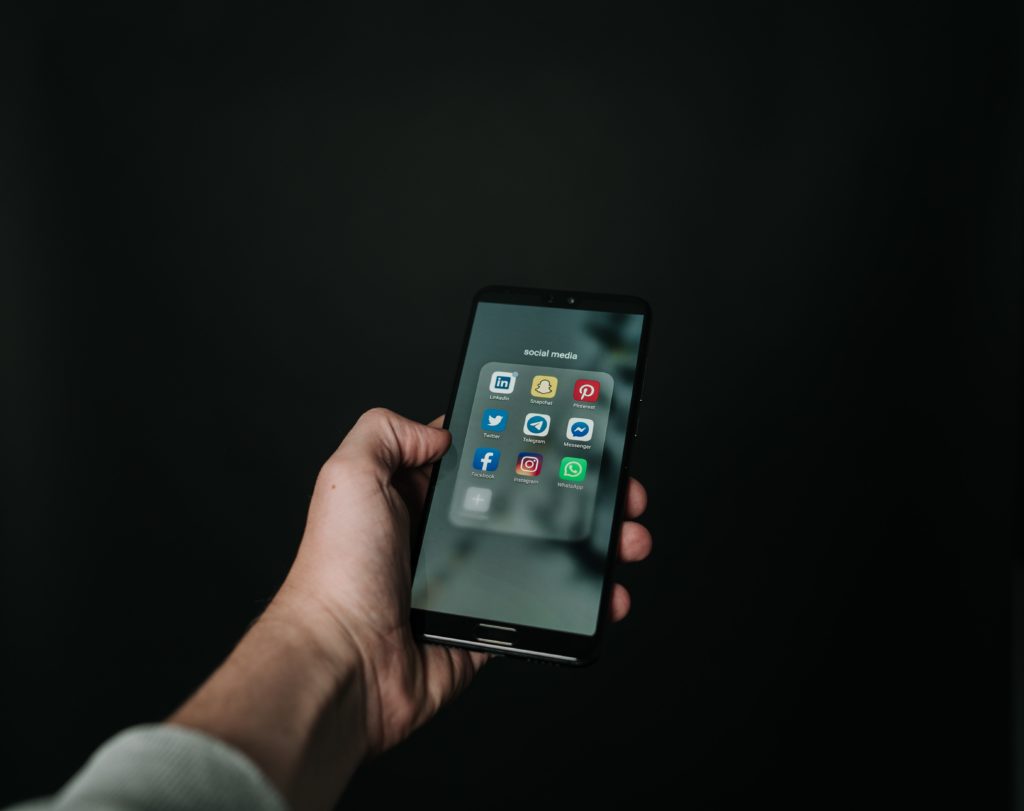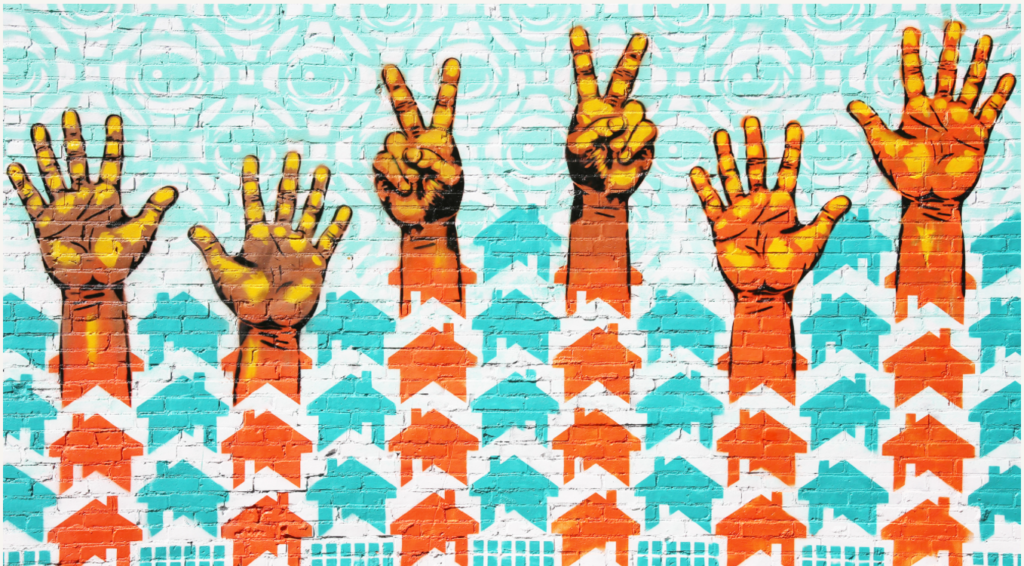Journalists can help the peacebuilding process with the right tools and knowledge. This section will look at different strategies that journalists can use within reporting to help educate and change the war mentality. These strategies do not come without their own set of difficulties, which is why we included a section on the challenges of the peace-building process for journalists in conflict zones. This section includes the following strategies:
Outlet for silenced stories
The (post-)conflict situation is in many ways an opportunity for those who could not voice their opinions to speak up. However, often conflicts do not end abruptly: power dynamics are still unequal, the danger for every citizen to be critical is still present, and journalism is not developed yet.
That’s why these specific strategies are even more important for media to be able to add to the peacebuilding process. Some of these strategies can be implemented autonomously, and some will require foreign assistance.
Radio Broadcasting

In many (post-)conflict contexts, radio broadcasting is the most accessible media communication method available to the public. Radio broadcasting can bring together ethnic groups and can be used for citizens to express themselves. It is a popular strategy because of its inclusivity (1): with radio broadcasting, under-educated parts of population also have access to valuable information. The challenges of how free one is to broadcast and how present the infrastructure is makes it sometimes necessary for foreign actors to support radio broadcasting.
For example, the UN Radio is frequently used in peace operations. In many of their 71 peace operations, the UN broadcast through local stations or create its own one. Ideally, local capacities are fostered so that local communities can sustain themselves.
Another example is Radio Dabanga. The Sudanese radio station offers English and Arabic news researched partly by locals for Sudanese people themselves. Radio Dabanga was forced to leave Sudan to ensure the safety of everyone involved in the radio station. With the help of Free Press Unlimited, they settled down in Amsterdam and started operating from there. The station provides regular news to people in Sudan (one hour every day) through shortwave radio. Radio Dabanga reports on health issues, various programmes and other daily information. The station also has a website that is accessible in both Arabic and English.
Social Media

Social media platforms are often propaganda tools used by a small group of elite during a conflict. If it is possible to access them without restrictions, the population can redefine the role that social media plays for them by sharing their own stories, and adding to the peacebuilding process.
Citizen journalists in particular can find an easy and free platform for their work in social media. These initiatives are important because without government censorship, they are very accessible to the larger parts of the population.
Alternative Media

Many studies state that peacebuilding can be promoted even better if the medium that is used changes(2)(3). Journalistic traditions of the West focus on writing and filming, but it is not easy for everyone to have access to sufficient education or technology in many (post-) conflict contexts. This is why artistic expressions through journalism can be a good way of adding to the peacebuilding process.
Creative journalism can convey clear messages, while also having an entertaining and accessible value. Art and journalism are increasingly overlapping. Local creative and art-driven communication can convey a message and will be seen as familiar and more trustworthy. Ways in which journalism can be conducted creatively in a (post-)conflict situation include paintings, photography, music, and caricatures. The African Conflict and Peacebuilding Review shows multiple instances of how this works. For example, art can be used as an educational medium (example of songs that inform about Gender-based violence in Uganda), or they can assist peacebuilding through being a tool for reconciliation and rehabilitation (art therapy for children, for example).
Journalistic training
The definition of peace-building includes addressing the root causes and effects of conflicts. It is difficult to achieve that without personal opinions or emotions influencing the work of journalists, especially if they lived within these conflict situations and have personal relations to what happened. This is why one important strategy that media in conflict can do is foster journalistic training to strengthen local capacities.
Doing this means seeing which issues are often addressed by local journalists. Every conflict situation is unique, and certain actors or events will be addressed predominantly, while other conflicts or non-conflict related topics are largely ignored. Fostering journalistic capabilities will not only reduce biases, but also show local journalists more options for expressing themselves. New formats of writing and filming are taught. Op-eds are rare in conflict situations but crucial in peace-building processes. Expanding the scope of journalism can enable it to become a proper tool for local opinions. Journalistic training includes:
- Media professionalisation programmes:
- Introduction of Alternative Ways of Reporting:
- Peace Journalism Training
- Ensuring Safety of media workers:
- Promotion of journalism:
- Conflict sensitive reporting:
Reconciliation
Journalism is often a tool to promote war in conflicts by dominant parties. In the peace-building process, it can become the opposite. Now, journalists can not only sustain the peace-building process through reporting but also become peacebuilding actors.
A space for reconnection
Many (post-)conflict contexts sustain the opposition and propaganda that ethnic and cultural groups have heard or suffered under. This makes a unified effort for peace difficult. Media can offer their platform to promote voices on all sides and allow certain ethnic, cultural, religious, or political groups and individuals to express themselves freely(4). This can fight existing stereotypes and opposition.
Grievances, sorrows, complaints and more can finally be voiced by more than just a few people with access to media. Peace-building can now become a social effort that includes the whole society, from individuals and families, communities, organisations, businesses, governments, and cultural, religious, economic, and political institutions.
There are multiple examples of this in Kenya. During the late 2000s, election coverage amidst a violent conflict was highly polarising. So, the mainstream media and other initiatives started to promote peace. Examples include The ‘White Ribbon Peace Campaign’, ‘I have no tribe, I am a Kenyan’ campaign, as well as campaigns led by various elders (Kikuyu, Kamba, Lou) (1). They advocated for dropping violence and attempted to re-unite Kenyans despite ethnic, cultural, political differences. Since these initiatives were led by Kenyans themselves, they also held credibility.
Platform for debate on peacebuilding
Peacebuilding efforts in war-torn contexts often rely on assistance by foreign actors. This, combined with the existing suspicion and mistrust of citizens because of the conflict, can create a lack of confidence in the peacebuilding process.
Instead of just imposing peace-building onto war contexts, citizens should be able not only to report themselves on the situation but also to comment on it. By allowing them the agency for speaking up, the media can diversify the opinions around the topic of peace-building and actively benefit the process by making feedback and criticism heard.
An example of how media can be held accountable through media can be found in the cases of Cypriot, Bosnian, and Sri Lankan -. There, media particularly relied on ICT (7)(Information and Communication Technologies) to act as a mediator between the local populace and the peace-building actors. Although there have been challenges, this proved to be a good way for locals to voice critique, as well as initiate grassroots mobilization and demonstrate their representation. Basically, the role of media proved to be a tool which decentralises the power imbalance, which is partly the goal of peace-building.
Coordination of peacebuilding actors
Peace-building is not only an effort by a single organization and a media outlet. It involves many actors with different ideas of how the process can best be started, sustained, and finalized. Without properly communicating and coordinating their goals and seeing where they can help each other out, peace-building actors can prolong the process and complicate it.
That is why the media is important as a tool for coordination between peace-building actors. If human rights activists, peacekeepers, and religious leaders speak of social justice, protection, and spiritual healing, things can become complicated(6). By using media which can create communication channels between these actors, they can know about each other’s ambitions and adapt their own approaches.
Coherence is the single determining factor for the success of a peace-building operation. A common and coherent peace-building strategy is not only a framework to achieve peace, but also works as a tool to evaluate the state of the peace-building process along the way. Coherence happens within the framework. This coherence also must be communicated to local actors. This is where media comes into play, as unsuccessful examples of peace-building coherence demonstrate:
The UN Development Assistance Framework (UNDAF) or the Integrated Missions Planning Process (IMPP) attempts to create that coherence. Still, they have struggled so far because of the danger of becoming wrapped up in their own planning processes and agenda. Therefore, media outlets can work as an objective mediator between actors to determine the peacebuilding strategy and communicate to local actors. Institutions trying to fill the media’s role in peacebuilding coordination run the risk of conflicting the peacebuilding process with their own ambitions. Examples of the media playing that role can be found in the case of the Nigerian Stability and Reconciliation Programme (NSRP) and the BBC Media Action (in Nepal). The former offered a five-year programme that allowed for conflict-sensitive reporting, and acted as a tool for governing officials, peacebuilding actors, and locals to communicate. The BBC Media Action offered a weekly radio and TV governance programme, which allowed not only for the creation of a coherent peacebuilding strategy, but also held that strategy accountable through televising the process publicly.
Footnotes
